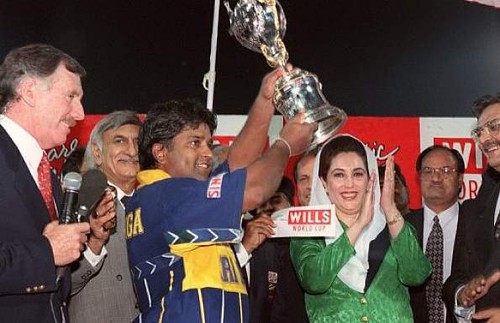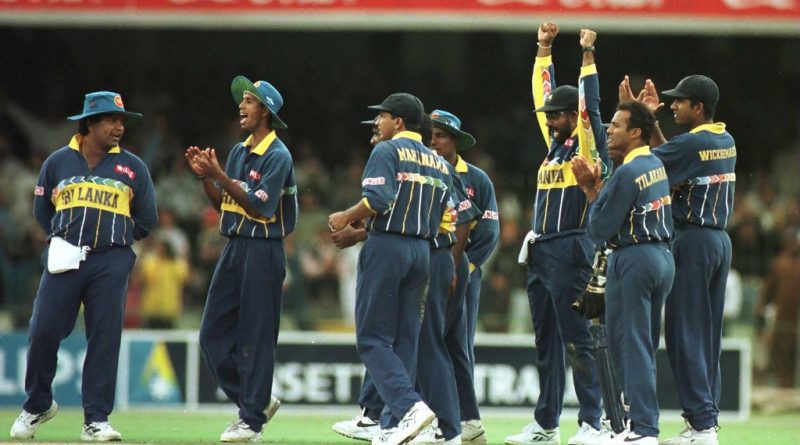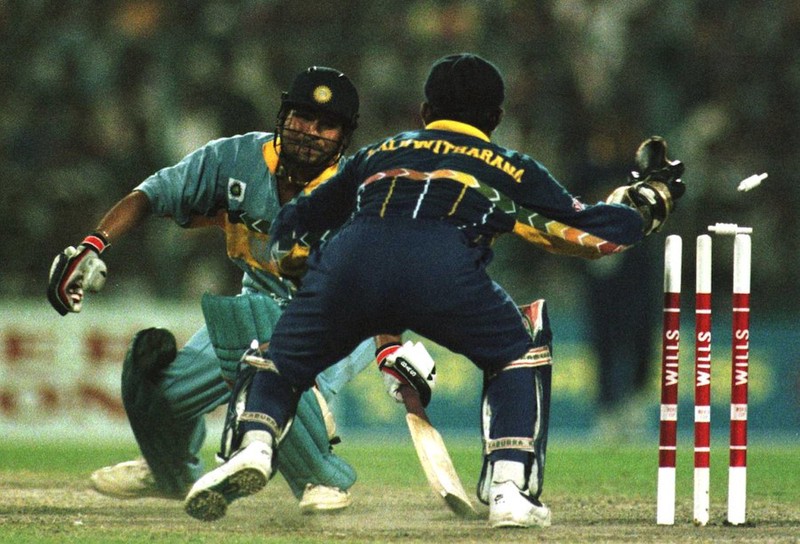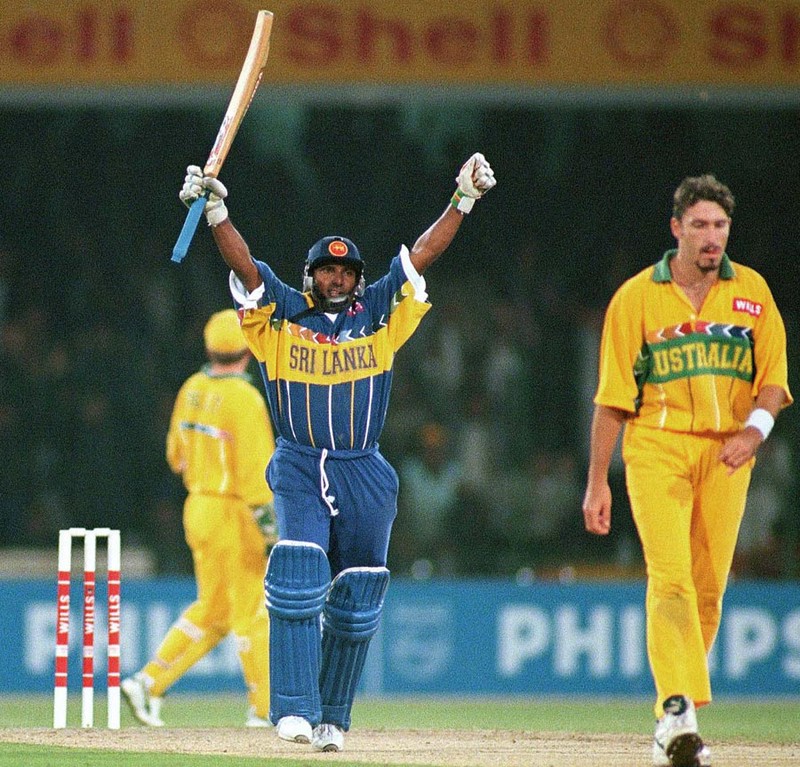The Sri Lankan team was considered a minnow back in 1996. Nobody in their wildest dreams would have predicted this tiny island nation to overcome the mighty India and Australia to win the cricket world cup. But they did, and in style.

Australia was ruling the roost in world cricket those days. India was a superpower with the likes of Sachin Tendulkar, the master blaster, Kambli and Azaharuddin. West Indies was slowly coming out of their prime. Pakistan was the recent world champion, and boasted one of the finest fast bowling line ups. Zimbabwe were not the regular pushovers and were far better than the side they are now. Kenya was the emerging power, the dark horse ready to topple the big guns of world cricket. Sri Lanka, among all these teams was considered a growing ODI team not predicted to be the world champions.

Aravinda De Silva and Sanath Jayasuriya had other ideas.
They changed the pattern of run scoring and stroke play in the first ten overs of ODI matches. In the Powerplay Overs, they were ruthless and gathered runs at a lighting rate. As openers, they were overpowered to the opposition batsmen . They used to accumulate runs early in the game creating positive momentum for the Lankan team. They used the power-play run scoring technique to overcome Indians in the Semi Final and Australians in the final.
For me, Aravinda De Silva was the man behind the triumph and Jayasuriya as his lynch pin. Having said that, I cannot forget Romesh Kaluwitharana, a wicket- keeper batsman, who was a cheeky run collector for Lankans.
My Color TV Ordeal - circa 1996
Back then, we used to gather at a house in our neighbourhood who could afford a color television. It was six years after National Television came into existence in Nepal. We had to rely on satellite television subscriptions to watch the world cup matches, which was luxury for most of the middle income households. I used to join seniors and cricket enthusiasts, and used to listen to them explaining why India or Pakistan will win the world cup.
The world cup matches were being played in the sub-continent countries of India, Pakistan and Sri Lanka. Australia was favourite to win, but sub-continent teams were the challengers. I knew cricket rules but was not capable to predict or provide analysis. My interest was to witness and follow the world cup cricket hype. The hype was very specific to the local youth, and seniors exposed to cricket from Indian influence. Nothing was happening in professional Nepal cricket.
Vinod Kambli Cried and Stranded in the middle, India lost the Semis
Sri Lanka downed hot favorite India in their backyards, at Eden Garden in front of the record crowd of more than 100,000 spectators. In the semi-final, India was supposed to win the match comfortably. India beat Pakistan in the quarterfinals. They never thought that Lankans would beat them in the semis.

But, that happened and India crumbled under the Sri Lankan spin attack . The target was 252, and India were cruising at 98 runs with one wicket down. The unthinkable happened after Tendulkar got out.
Seven Indian wickets collapsed just for 22 runs with Kambli stranded at one end of the pitch. There was nobody to support him. The Eden Garden crowd was so angry that they started to throw projectiles on the ground. Match was stopped and never resumed. Vinod Kambli, the player who never rose to the greatness he could have achieved, was crying and was in tears leaving the ground after conceding the game to Lankans. Dreams to lift the world cup at their backyard shattered into pieces. Lankans were jubilant. They were confident going into the finals.

The Final Showdown
The final was played between Sri Lanka and Australia in Lahore, Pakistan at Gaddafi Stadium. Remembering the Sri Lankan team of the final is overwhelming for me, even after all these years. Ranatunga, Chaminda Vaas, Muralitharan, Jayasuriya, Dharmasena, De Silva, Kaluwitharana and Roshan Mahanama were the gems of the Lankan team. Ranatunga was the influential cricket captain leading from the front. Vaas the fast bowling great with wild swings and deadly yorkers. The off-spinning great Murali who became the most prolific wicket takers of all time.
Lankans were in hot favourite form, but they were playing against the mighty Australians captained by Mark Taylor. The team was also star studded with the likes of McGrath, Ponting, Waugh brothers, Fleming, Ian Healy and the leg-spinning giant Shane Warne. The Australian team back then were considered ruthless, clinical and professional.

Australia batted first to make 241 in 50 overs with the fall of seven wickets. De Silva took 3 wickets in the final. Chasing the target Lankans lost their prolific openers Sanath Jayasuriya and Kaluwitharana when the score was 23. The Lankans needed miracle to save the game, and the miracle happened in the form of Aravinda De Silva who scored 107 not out to take his team through to lift the world cup trophy. He was adjudged man of the match for his bowling and batting display. Australia were stunned. The world cup was the beginning of the new dawn in the history of the world cricket that gave us the fiery Lankan side.
We are yet to see the rise of Lankan cricket to the same level that was in 1996.
This post is part of a series of cricket posts that @scorum-fans is curating leading to the Cricket World Cup 2019.
You can find the details here https://scorum.com/en-us/cricket/@scorum-fans/scorum-fans-announcing-curation-for-posts-related-to-the-icc-world-cup-2019
Comments